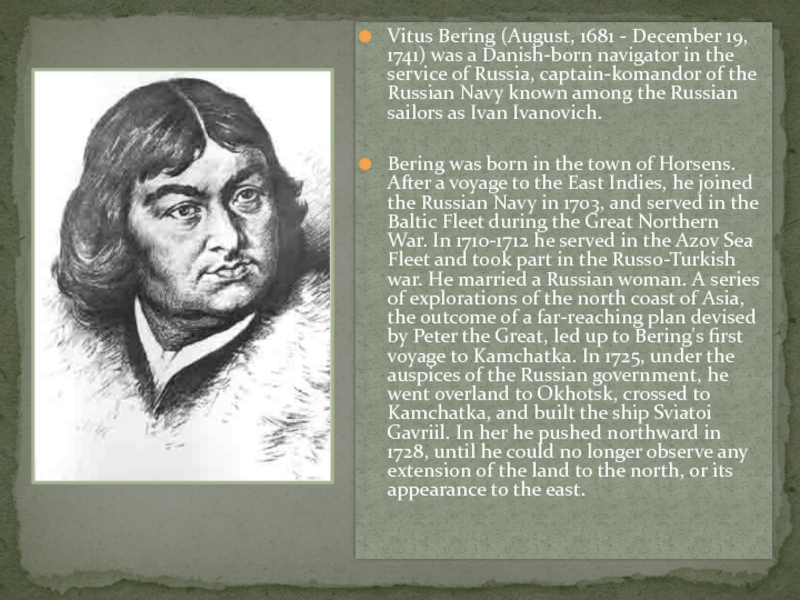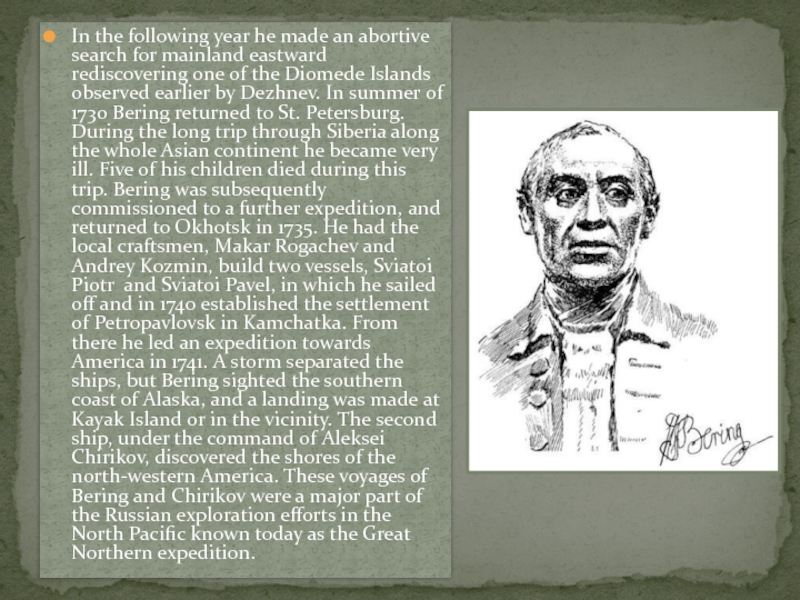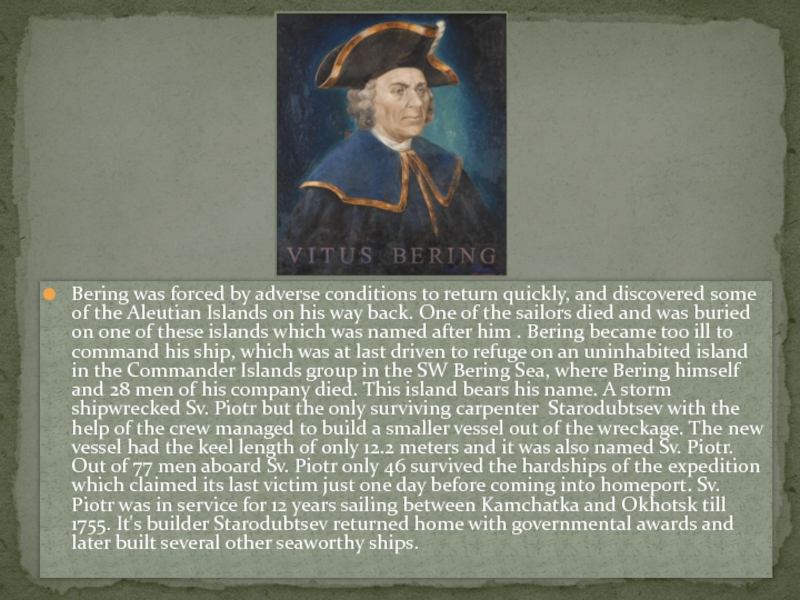Danish-born navigator in the service of Russia, captain-komandor of the
Russian Navy known among the Russian sailors as Ivan Ivanovich.Bering was born in the town of Horsens. After a voyage to the East Indies, he joined the Russian Navy in 1703, and served in the Baltic Fleet during the Great Northern War. In 1710-1712 he served in the Azov Sea Fleet and took part in the Russo-Turkish war. He married a Russian woman. A series of explorations of the north coast of Asia, the outcome of a far-reaching plan devised by Peter the Great, led up to Bering's first voyage to Kamchatka. In 1725, under the auspices of the Russian government, he went overland to Okhotsk, crossed to Kamchatka, and built the ship Sviatoi Gavriil. In her he pushed northward in 1728, until he could no longer observe any extension of the land to the north, or its appearance to the east.
























